by Beth Bolles | Jun 7, 2018
There is one tough annual plant that thrives in the summer garden and provides bright color in our sun and heat. Portulaca or moss rose (Portulaca grandiflora) is strong performer, even growing well when reseeding in sidewalk cracks and stone walkways. Of course it will be most attractive when used in containers or well drained landscape beds in bright sunshine.
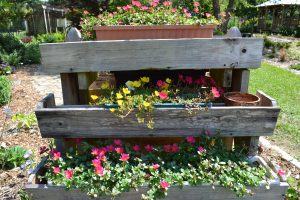
Containers of portulaca brighten an entrance to the herb garden at Escambia County Extension Demonstration Gardens. Photo by Beth Bolles, UF IFAS Extension Escambia County
The thicker, flattened leaves of portulaca make is adaptable to drier conditions. The plants are only about 6 inches tall but branches will spread out a foot or so from the center. The attractive flowers extend just above attractive green foliage in colors of yellow, pinks, and oranges. Portulaca is extremely versatile, making it a good filler in a container or at the edges of flower beds along hardscape areas.
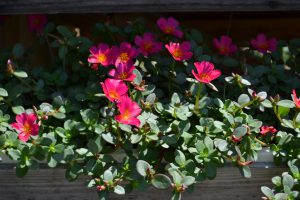
Bright flowers of portulaca reach for the sun. Photo by Beth Bolles, UF IFAS Extension Escambia County
Portulaca will not perform the best when soils remain too moist or days stay overcast for extended periods. Flowering will also be reduced if water is totally lacking. Maintain a balance by providing a quality soil that drains well.
Although many gardeners prefer perennials to annuals, portulaca can provide a big impact in the summer garden for a small investment.
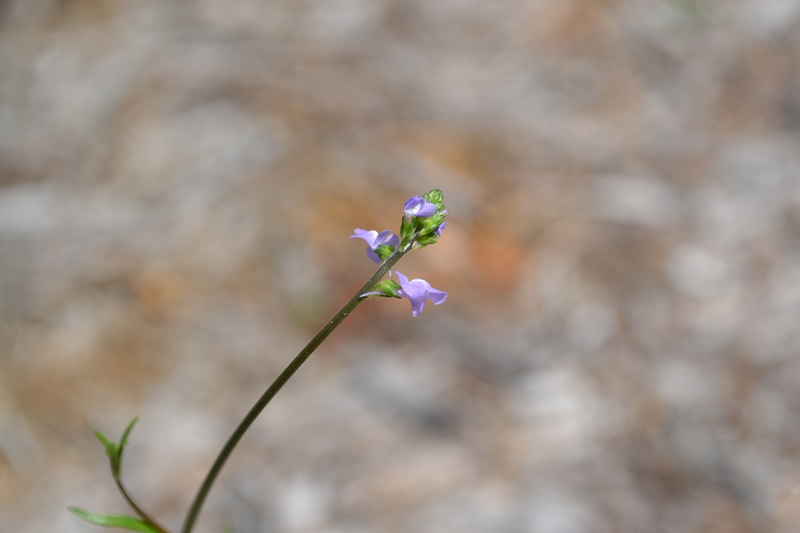
by Beth Bolles | Apr 9, 2018
The change in North Florida temperatures from cooler to warmer is making many winter weeds more noticeable as they begin to flower and form seed. Not all of these plants should be considered for mowing or hand pulling. There are several wildflowers that grow in landscape beds and thinning areas of lawns and can be enjoyed before consistent heat returns.

Toadflax flowers are held above the foliage and are light purple. Photo by Beth Bolles, UF IFAS Extension Escambia County
One very delicate wildflower that is growing now is the Toadflax, Linaria canadensis. The leaves are very small and grow low on the ground. Thin flower stalks grow several inches and are topped with light purple flowers. Although toadflax pops up in beds and lawns don’t be so quick to pull it out. This wildflower is a host to the Buckeye butterfly, one of our earlier visitors to gardens. If you look closely you may even see the tiny black, spiny caterpillar eating toadflax leaves. Visit the UF publication on the Buckeye butterfly to learn more.
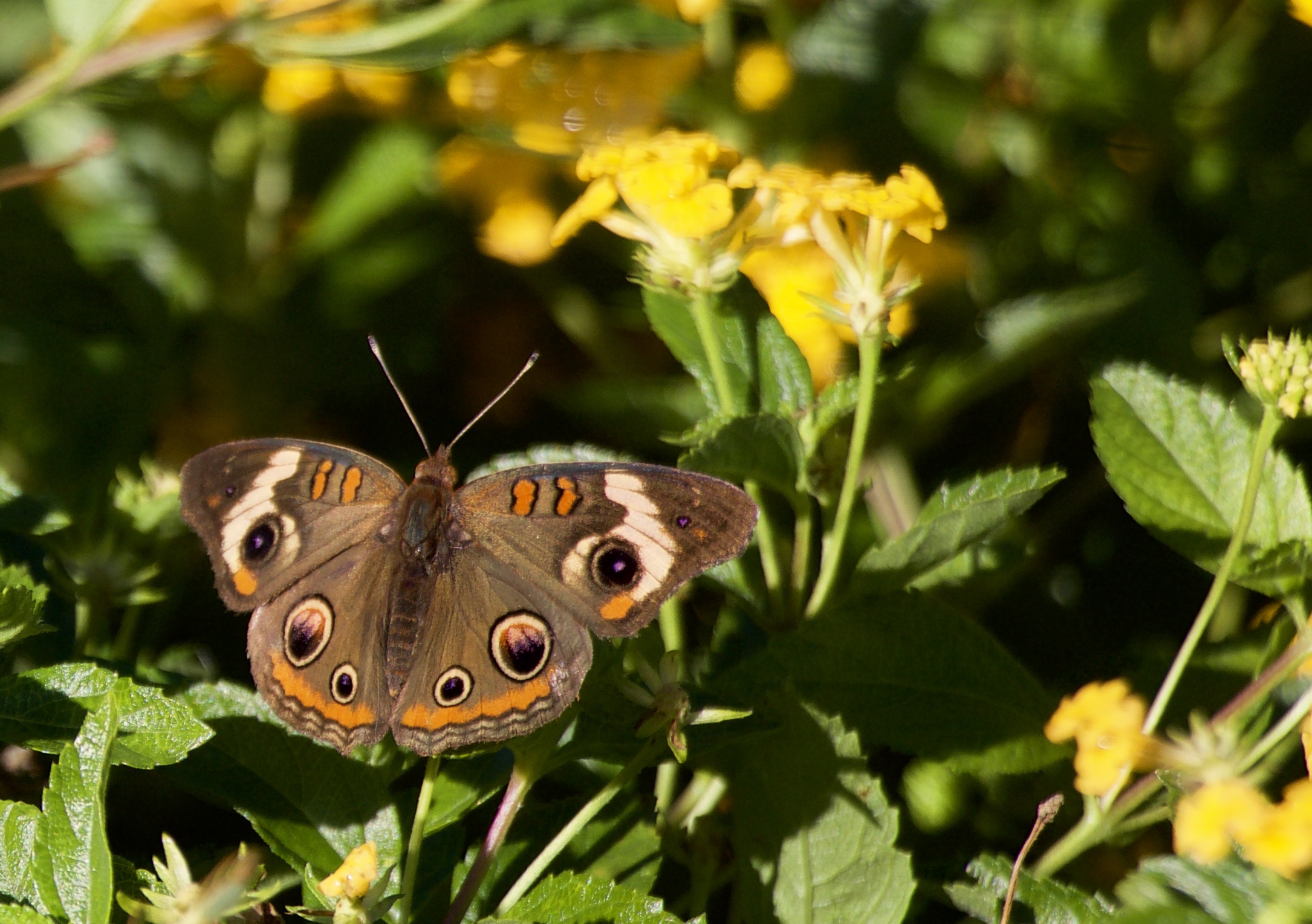
Adult buckeye butterflies are common in landscapes in early spring and late summer. Photo by Lo Sitton, UF IFAS Extension Escambia County
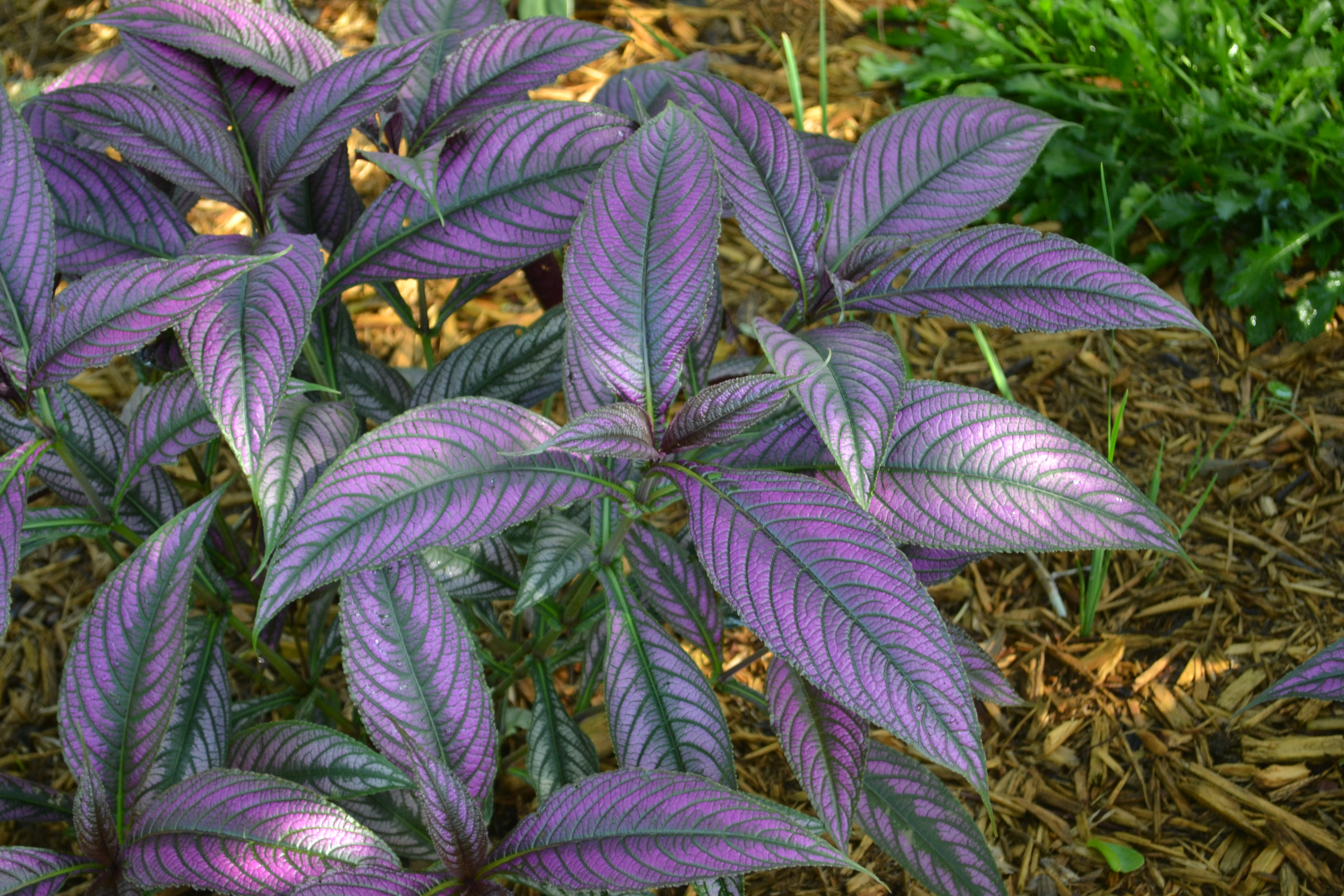
by Beth Bolles | Feb 26, 2018
Many landscapes have areas with tree canopies that lend themselves to becoming an attractive low maintenance garden area. Too often we may try to fight our shade by growing turf or pruning trees to allow more sunlight. The low maintenance approach can be to enhance your shaded area with plants and features that are both adaptable to low light and offer seasonal interest.
There are a variety of plants that perform well in the shade of a tree canopy, including evergreens, flowering perennials, and groundcovers. A key to remember is to make sure soil moisture matches the plant you choose. Tree roots will compete with plants you install so supplemental irrigation may be needed during periods when rainfall is lacking. Another consideration is that tree root systems may prevent a lot of digging for establishment so choose plants that may spread out on their own from the main plants. A few examples include Netted chain fern, Toadlily, Chinese ground orchid, and Raspberry vine. Adding specimens in containers for difficult to dig sites is also an option.
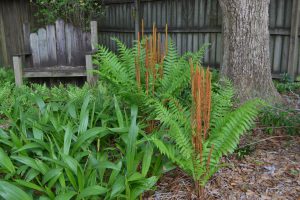
Under a tree canopy can be a low maintenance area. Ground orchids, cinnamon fern, and toadlily enhance a seated area. Photo by Beth Bolles, UF IFAS Extension Escambia County
Today’s plant options for shade are quite large. Below are just a few to consider.
Japanese fatsia is a large tropical looking evergreen that is very cold hardy. Attractive white flowers brighten the winter landscape.
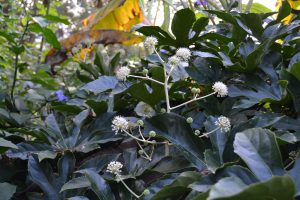
White flowers in winter are a bonus to enhance the large evergreen leaves of Fatsia. Photo by Beth Bolles, UF IFAS Extension Escambia County
Mountain snow pieris is a newer nursery offering with small white flowers during winter. Plants will need some moisture during warmer months.
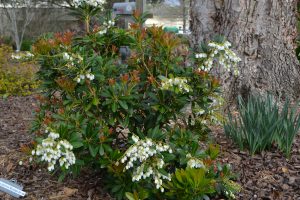
White blooms of Mountain Snow pieris in winter brighten an area. Photo by Beth Bolles, UF IFAS Extension Escambia County
Persian shield offers iridescent purple and silver foliage during warmer months. This plants would be considered an annual in most landscapes.
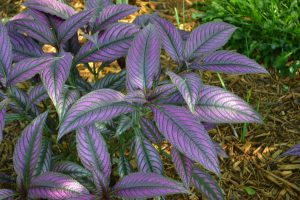
Even though it is an annual in most gardens, Persian shield brightens any shady spot. Photo by Beth Bolles, UF IFAS Extension Escambia County
The added benefit of landscaping under trees is that you have a natural self mulching area. You may need to dress up a few areas with additional mulch or redistribute leaves every so often so they don’t become to thick around plants. For more ideas on shade tolerant plants, visit the Escambia County Demonstration Gardens, 3740 Stefani Road, Cantonment, FL.
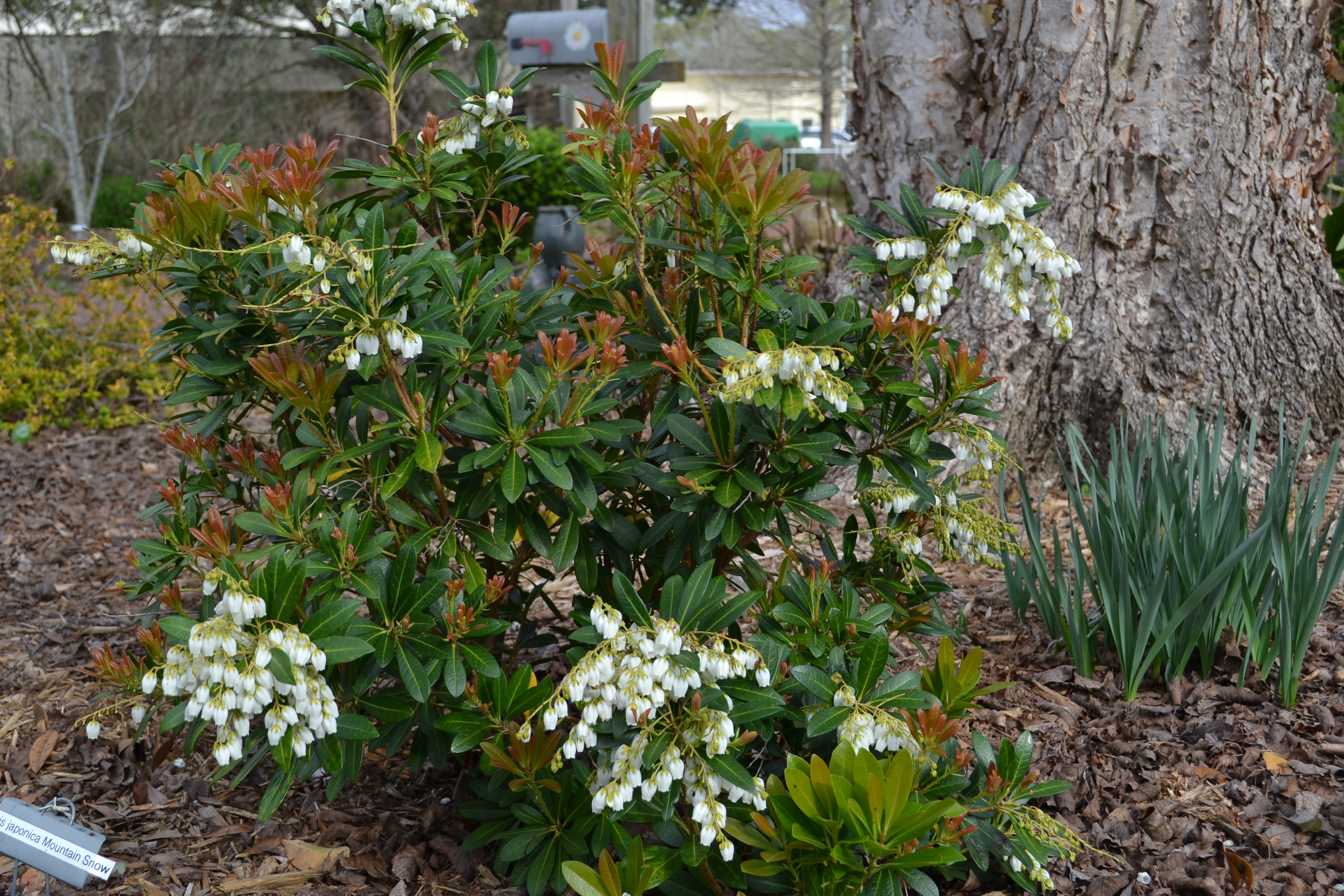
by Beth Bolles | Dec 1, 2017
There are plants that gardeners may know and love from other regions that just do not perform well in the heat, humidity, and soils of our area. One example is the Japanese pieris, an attractive evergreen shrub with showy white blooms in spring. This shrub has a few specific environmental requirements that make it unsuitable for most gardens along the Panhandle, including the need for rich organic soil that holds some moisture but is well drained.

Late winter/early spring flowers on the Mountain Snow. New foliage also emerges reddish. Photo by Beth Bolles, UF IFAS Extension Escambia County.
For those of you who thought that a garden with Japanese pieris is only a dream, the nursery industry has now made your dream a reality. Part of the Southern Living plant collection is a more heat tolerant Japanese pieris called Mountain Snow™ that is showing promise. Site selection is still very important. Mountain Snow™ will grow best with summer shade and in beds that are amended with organic material. Water must be applied when rainfall is lacking and soil must be well drained.
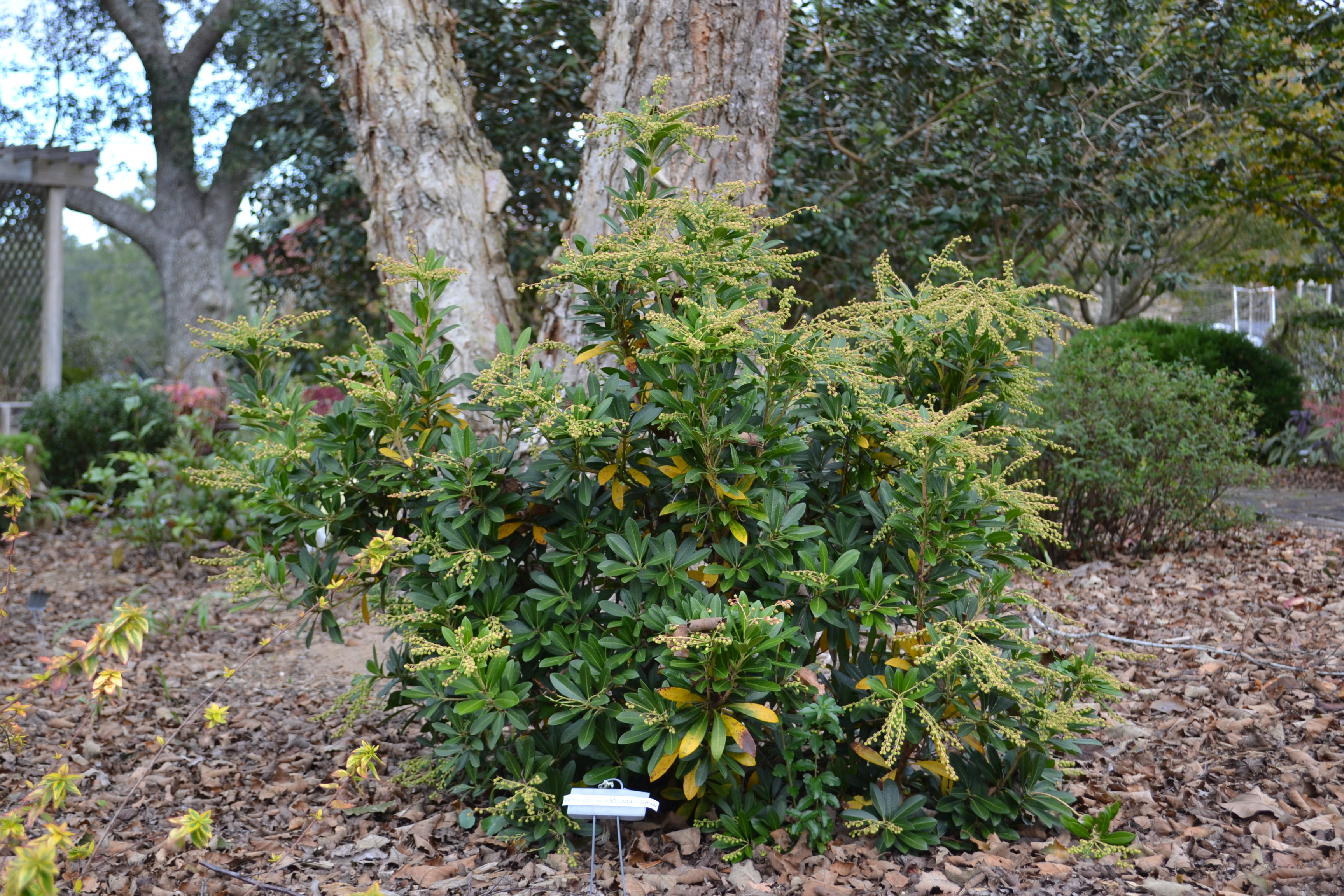
Shrubs will grow about 4 feet by 3 feet. Flower buds cover this established plant. Photo by Beth Bolles, UF IFAS Extension Escambia County.
Although those requirements can not be met in all landscapes, there are gardens like the Escambia County Demonstration Garden where a Mountain Snow™ plant will grow well. Our shrub is planted in an irrigated ornamental bed with organic mulch on top and receives summer shade from a deciduous tree. At two years old, it appears to be doing well in our area. If you have a garden spot with the conditions appropriate, consider trying this shrub for early season interest.
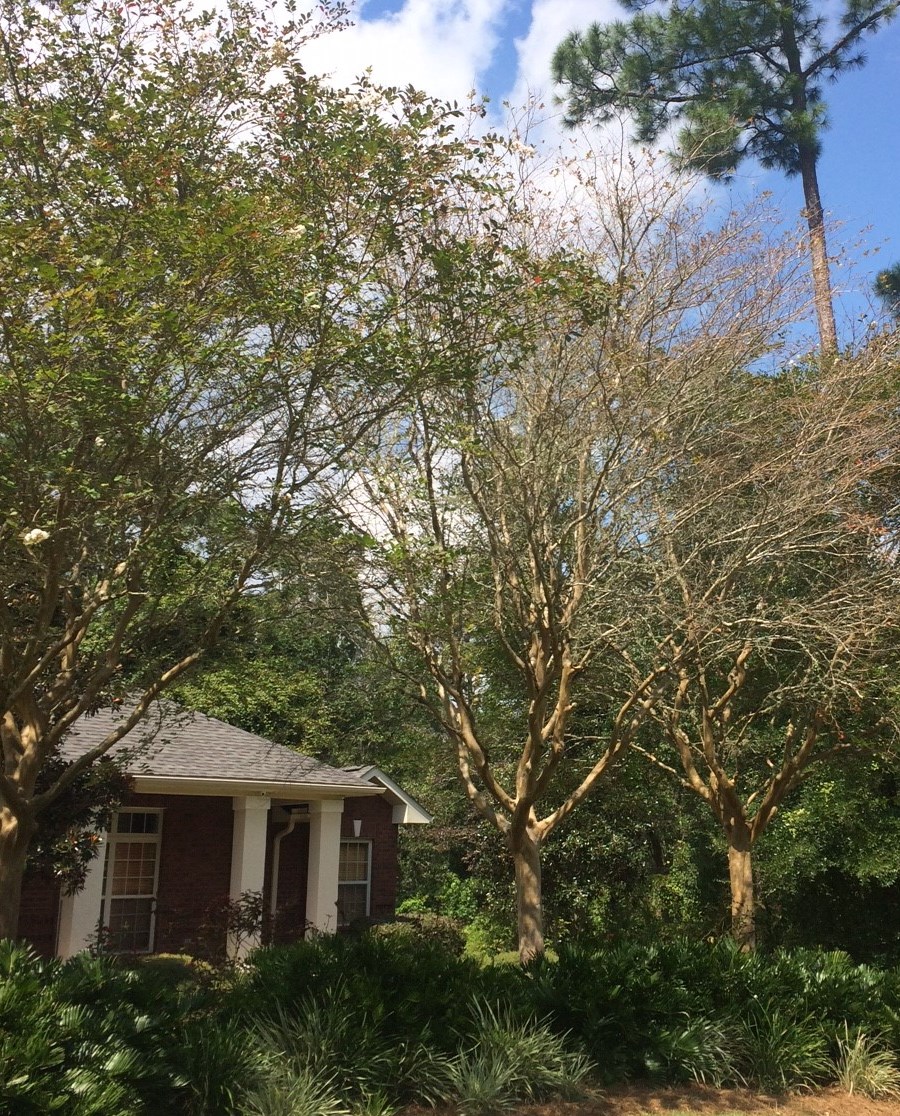
by Beth Bolles | Oct 23, 2017
Trees are a landscape asset for many homeowners. When a new tree is installed in our landscapes, we can’t wait for it to mature to provide shade or landscape interest. The heartbreak for many homeowners comes when this important part of their landscape, begins to decline five to ten years after establishment. We often consider a pest as the cause. The common culprit is often hidden below the mulch and soil and is easily preventable.
When larger specimen trees are installed in residential and commercial landscapes, they may be delivered with materials that help hold the rootball in place. Strapping often runs over the rootball and when trees are young is several inches away from the trunk. Installers or homeowners often do not cut the strapping during installation.
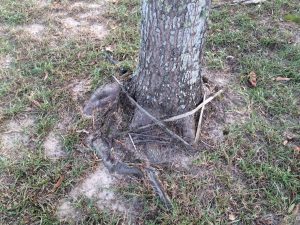
As this tree continue to grow, the rootball straps will interfere with normal trunk development. Cutting the straps takes only a few seconds at the time of planting. Photo by Beth Bolles, UF / IFAS Extension Escambia County
Over the years, tree trunks will grow in diameter and eventually reach the strapping. Because the strapping is still firmly in place, it can cut into a growing tree, resulting in girdling. Although many trees try to overcome the injured area by forming new wood over and around the girdling, this is a major stress that interferes with water and food movement in the plant. What we see is a tree that may be slower to leaf out in the spring, a thinning canopy, and twig dieback. These symptoms may be confused with another cause since the strapping is normally hidden from view.
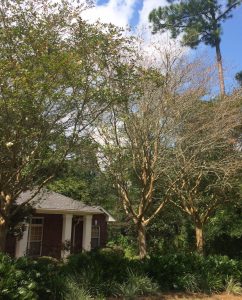
The crape myrtle on the right has a very thin canopy. Investigation found a severe area of girdling from strapping left uncut at planting. Photo by Beth Bolles, UF / IFAS Extension Escambia County.
If you do have a tree that exhibits the above listed symptoms, it never hurts to look at the trunk and root flare just below the mulch and soil surface. If you find strapping still in place, cut it so that it is loose. Depending on the severity of the problem, this may not save the tree but it is worth a try on your important investment.














